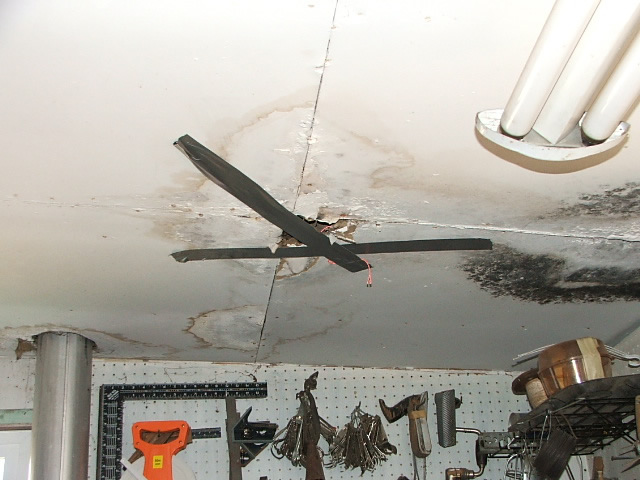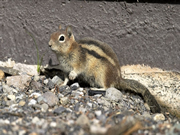Raccoons in Attics

A raccoon in the attic will urinate and crap everywhere, staining the ceiling below.
'Raccoons in the attic' is such a common complaint, I hear it every single day.
Why Attics?
Mama raccoon wants a place that is warm, dry and safe for her young. She thinks your attic is ideal. Attics provide comfort and security, and she can get in through any little hole in your soffit which she will likely make larger.
Mothers seek safety from male raccoons, who would kill the babies if given the chance. When we perform raccoon jobs, we often find murdered baby raccoons strewn across the rooftop because a male got to them before we did. A male raccoon is threatened by the presence of babies, because it introduces to possibility of more male competition.
If you see or hear raccoons on your roof, odds are that they also go inside your attic or chimney.
Common Mistakes
Sometimes homeowners will notice a raccoon in the attic, and wait for it to leave. Then they seal off the access point, not realizing that there are babies inside. When Mama is sealed out of the attic, she goes nuts and runs around chattering trying to get back in to her babies. The babies hear her and try to run across the attic to get to her. They fall down into wall cavities or get lost in the insulation, and you don't even know about the problem until the unbearable smell reaches your nose. Remember, live babies in a nest are always easier to work with than dead ones scattered willy-nilly. Live animals squawk and chatter and are much simpler to locate and remove. They will also cost you less money to remove than dead ones.
Other mistakes include playing loud music and turning on bright lights to drive the raccoons away. These methods do not work.
What to do
The best course of action when you have raccoons is to hire professional removal while the family is intact and alive. We can still do the job if they are spread out or if some have died, but it will likely be more complex, and the damage more expensive to repair.
My wildlife technicians are extensively trained and have experience in removing raccoons. We have methods by which we are able to catch an entire family of raccoons at once, using the babies as bait and mama's instincts to protect her young to get her to remove them for us. This method is safe and very effective, leaving no unnoticed babies mistakenly behind. This process is the very best, and if at all possible is the one we like to employ.
What Happens After Removal?
Once we get the raccoons out, we finish up the job by removing all contaminated material and disinfecting affected areas, and by sealing off all access points so your problem does not recur. If your ceilings and walls are stained with raccoon urine and fecal matter, you are surely very desirous to know that you only have to deal with this once. A quality animal removal job will prevent tomorrow's animals from coming into your house again.

 1-888-488-7720
1-888-488-7720























.jpg)









